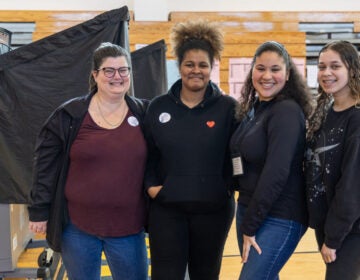Northwest Philly history buffs wish it was easier to draw tourists to Germantown and beyond
Philadelphia is known for its historic offerings, but Historic Germantown executive director Barbara Hogue said she thinks tourists are overlooking historic sites in her part of town — and it’s not entirely their fault.
To the historic-site umbrella organization, much of it comes down to public transportation.
For about four years, Hogue has been seeking new ways to draw tourists to Northwest Philadelphia because the current system isn’t exactly tourist-friendly.
In discussing the issue with the Greater Philadelphia Tourism and Marketing Corporation, Hogue said the recommendation has been to “find a direct route to get people [to Germantown]. It needs to be very simple.”
Hurdles to drawing tourists
However, simplicity is not currently part of the nine-mile voyage between City Hall and Germantown and Chelten avenues.
“Riding the 23 bus is just not an option,” Hogue said of the nearly 40-minute ride through some rough neighborhoods. “If you ride the [SEPTA] regional rail, you really have to know where you’re going to get [from the] train station to historic sites.”
It takes 20 minutes on the Chestnut Hill East line to get from Market East to the Germantown station at Chelten Ave. and Baynton St. and ten minutes more on the Chestnut Hill West line to the stop near Chelten Plaza.
Then, when tourists get off the trains roughly two or three blocks from Germantown Avenue historic offerings, better signage is needed, said Hogue, noting that funding for that just isn’t available at this time.
Other options
Hogue said she remains undecided about possible solutions.
While she likes the idea of running an independent trolley from Center City to Germantown — GHS once received a tourism-commission grant to run a shuttle to the West Oak Lane Jazz and Arts festival and historic sites — it’s cost-prohibitive.
“It’s not just the cost of the driver and gas and car. It’s the cost of promoting that to an audience,” Hogue said. “And, it wasn’t well publicized. [GPTMC] gave us money to hire the trolleys, but there was not money to advertise to anyone that the trolleys were even there.”
Hogue also pointed out that trolley services have seen budget woes like losses which lead to the discontinuation of the Phlash service until destination spots like the Philadelphia Zoo, Please Touch Museum and the Art Museum stepped in to save it.
Phlash charges $2 per ride — just like with SEPTA buses and trolleys — for a loop from Penn’s Landing to the Avenue of the Republic in Fairmount Park.
GPTMC spokesperson Cara Sneider said transportation funding is typically hard to come by; since the organization doesn’t have a dedicated transportation budget, it relies on state funding or grants.
“Public transit is a business,” she said, “and we’ve only been able to do it when we’ve had a separate funding source.”
Still wants a trolley
Despite those hurdles, Hogue said she still aspires to secure trolley-system funding.
“I think, ideally, we want to link Center City to the Northwest,” she said. “That would be some kind of service that does a big ‘ole loop that maybe leaves from Center City.”
Hogue said she’d like to link up with neighborhood organizations in Mt. Airy and Chestnut Hill “to add shopping and food components for an ideal tourist experience” and ensure all three neighborhoods benefit.
Over at Mt. Airy USA, director of commercial corridor revitalization and the business association Elizabeth Moselle said the organization has also discussed a transit solution for several years. (Disclosure: Moselle is the sister of NewsWorks contributor Aaron Moselle).
“Getting tourists is pretty difficult the way that it is,” she said. “It’s something the organization feels it needs in order to boost its appeal to visitors [and] also to attract more young people to the area.”
Moselle said MAUSA has discussed two solutions that might help combat the problem: An express 23 bus and more frequent and later regional-rail trains.
However, SEPTA spokesman Andrew Bush said the transit agency has not been approached with the idea of an express bus. Even if it had been, he added, it’s not a project SEPTA would likely pursue.
“We don’t think we would be able to do it because it would be pretty costly to do something like that, and it would be duplicating some service we already have,” he said. “Our research and experience has shown that they’re more likely to be attracted to train service than bus service.”
Despite that, Hogue said she hopes to keep the search for solutions alive.
WHYY is your source for fact-based, in-depth journalism and information. As a nonprofit organization, we rely on financial support from readers like you. Please give today.




